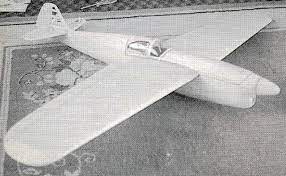Yep ,
Had snotty runs on a G 51 , the intake stock is pretty level with a 3 inch spinner , I figure the sudden turn on inside squares upset the thing - with the onrush of fresh air .
BUT ,
The Tank Vent on a certain contraption ( uniflow ) varied 1/4 turn on the setting , from aiming straight forward - to straight in with the end trimmed 45 Deg , say 3/4 in from fuse. wall .
The Straight forward aim on the vent was way better & closer air to ground . The extra 1/4 rich was needed with the angle cut end . which brings us to . . ,.
The nasty Rich into wind - Lean Down wind - LETS HIDE the Vent in the Cowl - trip - trick . etc .
So , with the Nasty nose intake ( Split at the fins ) and YES the ' choke ' is near totally inaccesable . So tecniques need to be applied . with the rear intake a Q.D. Cowls nearly a must .
A Full fuel line or NO START , R V or F I , ( essentially - Blow into the vent to prime line , and DONT flood it )
NOW ,
If the ' Pressure Variation '- can cause the lean downwind - rich into wind annoyance , Does a Semi Sealed intake tract on a rear intake set up actually give an advantageous opperation . Something Did .
So , We will put the Picture On . Here I pressume its just with the 21/40 . A 9 mm ( rat race ) intake & a 11 X 4 prop , and it yammers through Any wind . Even Upwind stuff . But needs 10 or 12 ounce tank !
The HP 40 RPR ( Rear intake Pylon ) with the dropped sleeve - Std HP F2B sleeve timing . Std HP Disc , gets a Three ' break ' run 4-2-howl to hold against ocean breezes . And switches Back down instantly .
The cowl outlets ( the Brass Tubes ) are to steer the nose out proportional to wind speed. Theyre the ' cooling air outlets ' the Lower nose intakes cylinder cooling - seperated aft briefly , too .
The upper half of the split nose intke , feeds past the front of the motor , up around the case to the intake area . Nothing particularly sophisticated or planned . But it did end up ( by luck mainly )
giving a strong steady power response . Particularly in nasty air .

Kinda Inspired by a picture of John Havels Folkerts in a ancient American Modeler Mag , and John Hary's P S S , back in 76 . The big ugly one with the RB 75 dosnt shut down / switch back - redilly yet . ands too big.

Being a Slope Soarer WIND is part of the Equation .
Havels looked a clean lean machine , in the PAMPA artical he mentions WIND too ( Theres a thread on L E Sweep , tthese're all semi relivant , there . too .

)

Ran a Std'ish size nylon intake with the needle flat across it . Rear Intake F2B engines arnt particularly unusual . Over time at least . MVVS 5.6 , later 5.9 , a few commie ones etc etc .
The point being , perhaps ( IF its how its working ) the rear of the engine compartment is a plenum chamber . Differant kettle of fish to a front intake .
BUT ,
seeing the differance from upwind to downwind on ' merely ' a tank vent reposition , there has to be a similar pressure variation , if minimal , at the cowl opening , one would think .
Do electric contraptions give sufficent download to find motor load upwind Vs downwind .
( And how do you get a RB 75 to stop clawing away for 50 yards out of loops etc when its blowing & loaded up . Ton of grunt but not to delicate in its characteristics . )
As an aside , coats & things flapping about and unobstructed splay port Bonneville heads , can get ' wots going on ere ' when they mix . Not to mention flooded & miss fire .
A finger near a open running intake , gets sucked , cold , and things . Feeding a intake puts that pressure variation elsewhere . Hence a ' tuned length intake ' - Ram feed ' ' Plenum ' etc .
But the tank vent & stagger / leanness into & out of winds perhaps the simplist conundrum .
